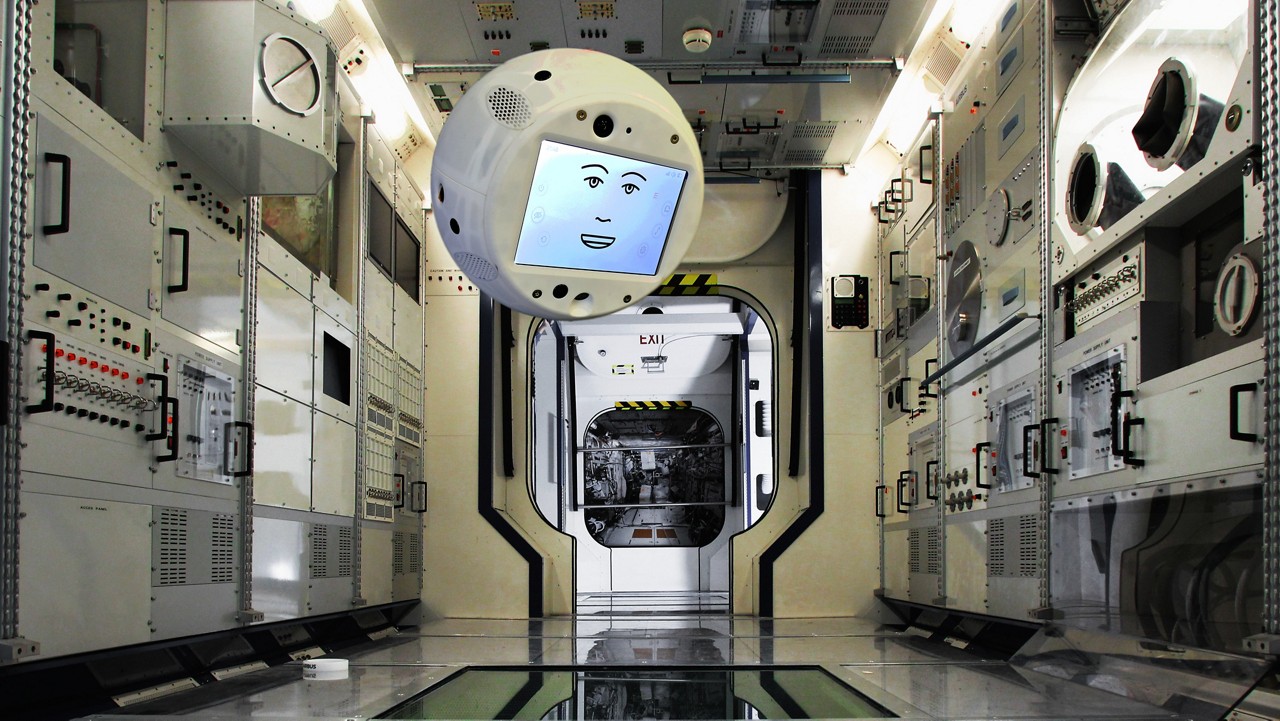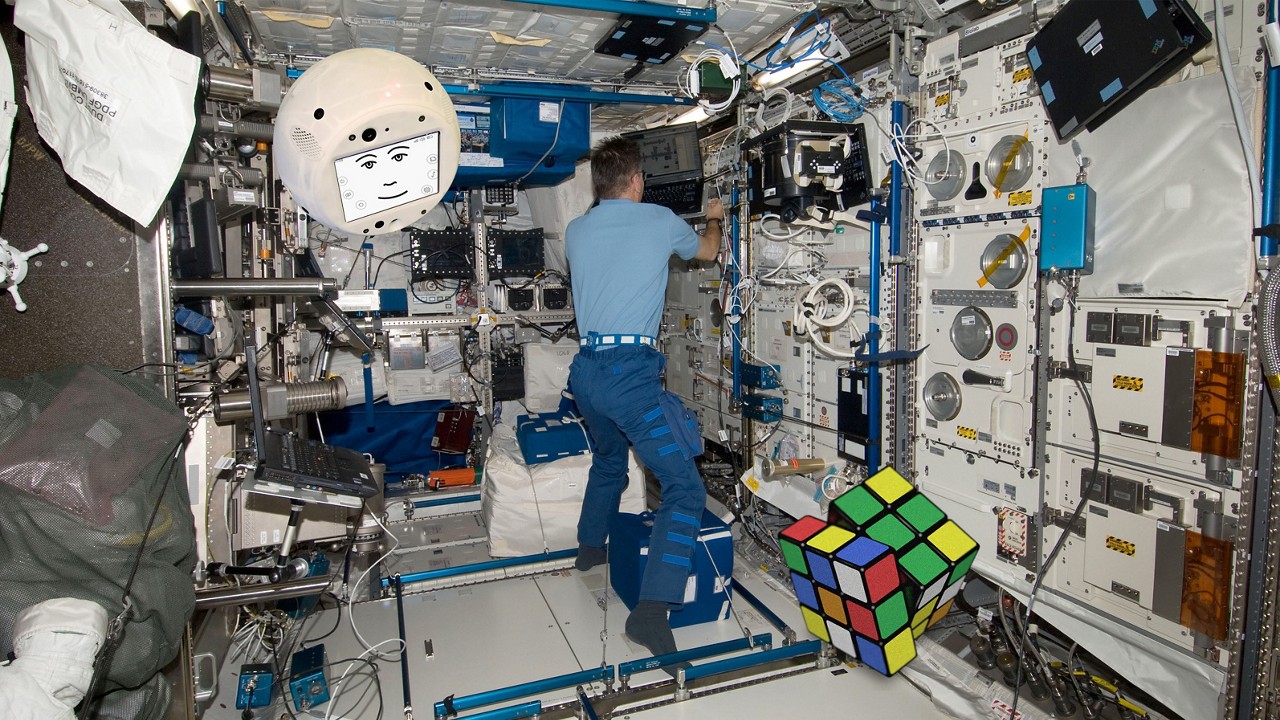This Flying Space Droid Wants to Make Friends with Astronauts
The world's first flying, autonomous, artificially intelligent (AI) astronaut assistant will soon get to work in space.
Meet CIMON, the first AI-based assistance system for astronauts. CIMON was created by Airbus, in cooperation with IBM, to provide mission and flight assistance aboard the International Space Station. The 11-lb. (5 kilograms) round robot looks like a medicine ball and has an unforgettable face.
CIMON has been trained to interact with European Space Agency astronaut Alexander Gerst with photos and voice samples from Gerst. The bot is launching this June with other scientific equipment aboard the Dragon spacecraft on SpaceX's 15th resupply mission. Gerst will test CIMON aboard the space station until October 2018. Described by Airbus and others as a "flying brain," CIMON will be the first of its kind in space and will hopefully become "a genuine 'colleague' on board," a statement from Airbus said. [Real-Life 'Replicants': 6 Humanoid Robots Used for Space Exploration]
Airbus hopes that CIMON's computer voice and screen face, which Gerst gave input on, will help the AI to "make friends" with the astronauts on board the space station, company representatives said in the statement. To help it do so, CIMON will use IBM's Watson AI technology and "will be able to listen, understand and speak to the user," Till Eisenberg, CIMON project lead at Airbus, said in an email to Space.com.

Eisenberg told Space.com that "CIMON can guide the crew" and help them "by reading instructions, showing text or video on the screen, and answering questions." He also said that the round bot will be able to detect users' moods and use that information to better interact with the crew.
According to the statement from Airbus, CIMON will also help Gerst with three major tasks:
- Experimenting with crystals
- Solving a Rubik's cube with the help of videos
- Conducting a medical experiment — CIMON will act as an "intelligent" flying camera to document the experiment
CIMON will also serve to demonstrate and explore how robots, specifically robots with emotional intelligence, will interact socially with humans. The statement from Airbus said that social interactions between humans and robots will be especially important for long-term space missions.
Get the Space.com Newsletter
Breaking space news, the latest updates on rocket launches, skywatching events and more!
But CIMON won't just be an important tool (or "colleague") for astronauts. The happy-looking robot ball could also be useful in hospital or social-care environments, the statement said. However, while the droid's potential applications are exciting, "there is still some way to go" before the tech is commonplace in both space and our regular lives, Eisenberg, said.
An assistant like CIMON could be vital for astronauts because of the strange, often-difficult environment aboard the space station. "Astronauts have to work in a challenging environment," Eisenberg said. "They have to work on various facilities and perform experiments in different disciplines in a noisy and complex surrounding [environment]."
Eisenberg and the rest of the team at Airbus think that CIMON could reduce stress on the job and make tasks easier, he said.
Perhaps the most fascinating fact about this new AI astronaut assistant is the inspiration behind its design. While Gerst had some say in CIMON's voice and face, Eisenberg told Space.com that, among the many design influences, "The closest connection can be seen in Professor Simon Wright of the science fiction story 'Captain Future,"" a scientist who, in the science fiction series published from 1940-1951, put his brain into a robot body.

Email Chelsea Gohd at cgohd@space.com or follow her @chelsea_gohd. Follow us @Spacedotcom, Facebook and Google+. Original article on Space.com.
Join our Space Forums to keep talking space on the latest missions, night sky and more! And if you have a news tip, correction or comment, let us know at: community@space.com.

Chelsea “Foxanne” Gohd joined Space.com in 2018 and is now a Senior Writer, writing about everything from climate change to planetary science and human spaceflight in both articles and on-camera in videos. With a degree in Public Health and biological sciences, Chelsea has written and worked for institutions including the American Museum of Natural History, Scientific American, Discover Magazine Blog, Astronomy Magazine and Live Science. When not writing, editing or filming something space-y, Chelsea "Foxanne" Gohd is writing music and performing as Foxanne, even launching a song to space in 2021 with Inspiration4. You can follow her on Twitter @chelsea_gohd and @foxannemusic.









